Virginia District 6 Results
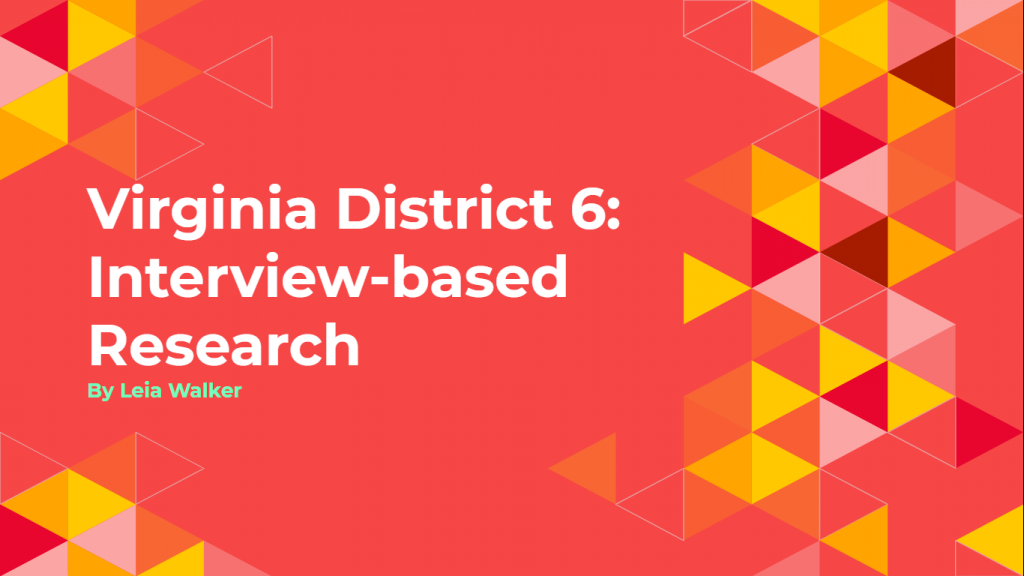
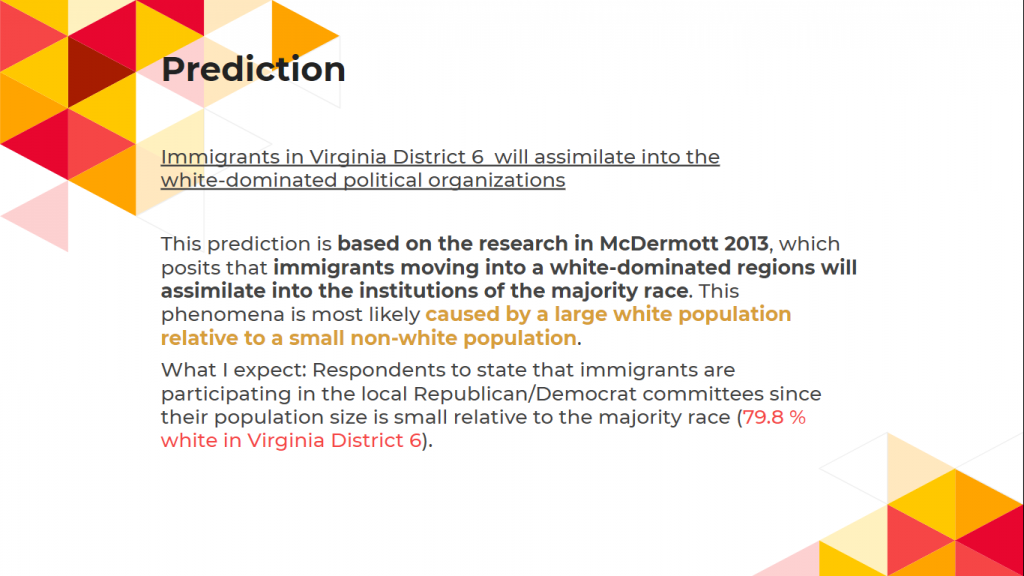
I predicted that immigrants in Virginia District 6 will assimilate into the white-dominated political organizations, which means political integration. This prediction is based on the idea that small immigrants will follow the political and social behaviors of the majority race due to the strong racial identity of the majority race impressed upon the minority (McDermott 2013). Virginia District 6 is a very suitable district to test this prediction in because of its 79.8% non- Hispanic white population (census.gov). I also predicted that regardless of party lines, the immigrants will be able to assimilate since their population is small relative to the majority race.
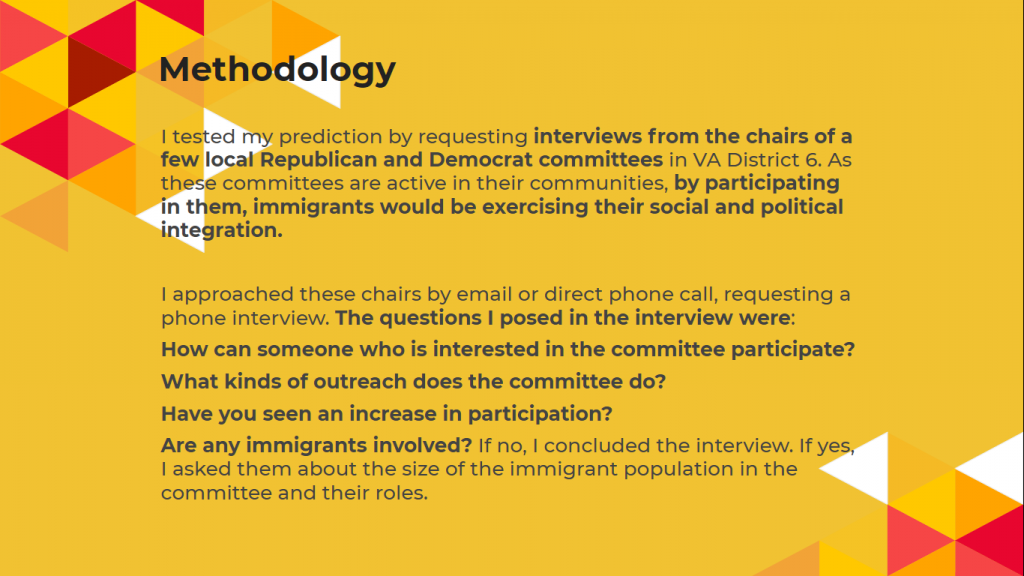
I chose to request interviews from four party committee chairs within Virginia’s District 6. The chairs were from the Amherst County Republican Committee, the Botetourt County Democratic Committee, the Shenandoah County Democratic Committee, and the Warren County Republican Committee. In the email or voice mails that I left, I told the chairs that I was a first-year student from Princeton University, researching the role of local political organizations in their communities. I told them I was taking a politics class, but did not specify that it was a class on immigration policy and policymaking, for fear that the Republicans would hang up on me or get defensive. In addition, I let them know it would be a simple four-minute conversation, even though it went over that time because the chairs were very reflective. On a side note, I think it was important I used the term “conversation” as opposed to interview, so the chairs would not feel pressure to be inauthentic in order to sound more polished. Thanks to Professor Valenzuela’s prompting, I asked them about the ways in which one can get involved in the committee before I asked specifically about immigrants. The Republican chairs did not seem offended or defensive when I asked them about immigrants because I framed the interview around the root of immigrant experience–local context, versus immigration itself. Overall, I was able to get information about immigrant political integration in District 6 without explicitly stating that as my goal. If the chairs knew anything about the immigrants actively involved, I further asked them about the roles that the immigrants play in the committee and how much of the committee they occupy.
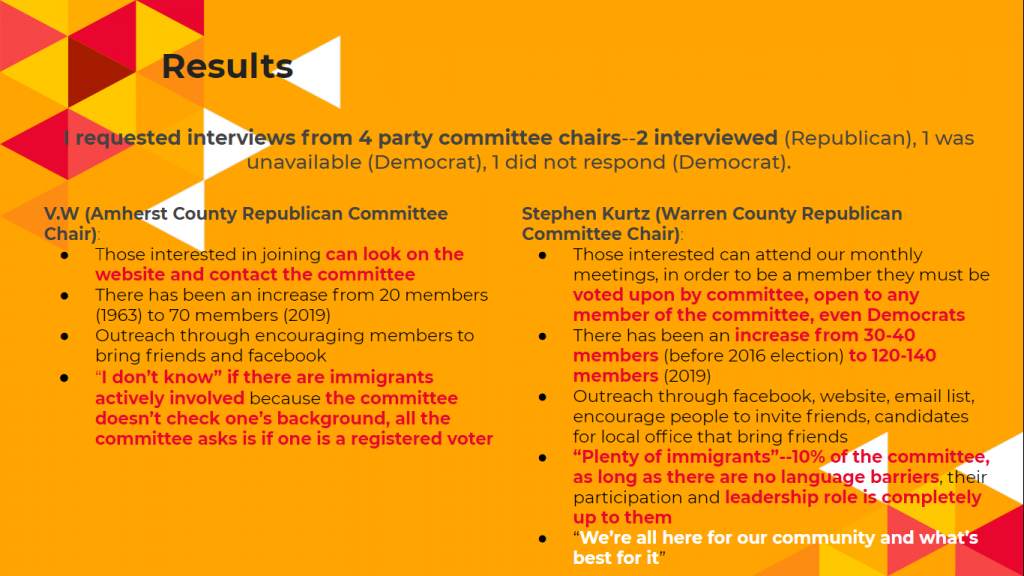
Of the four requests for an interview, three responded, two interviewed. Both Republican committees responded to my phone call and/or email within an hour. The Shenandoah County Democratic Committee chair responded in two hours, but she is travelling in Europe with no cell phone access. The Botetourt Democratic Committee chair did not respond. The quick responses from the Republican committees surprised me at first because I assumed they were busy being involved in their community, but now I understand that their willingness to have a conversation with me probably derives from their success (and furthermore confidence) in impacting the politics of their community. The responses of V.W. of Amherst County (I am addressing him with initials because he did not give explicit consent to have his name recorded) and Stephen Kurtz of Warren County were virtually the same up to the question of how many immigrants were involved. V.W. did not know if immigrants were involved, but his response was pretty generalistic, claiming that all it takes to get involved is to be a registered voter. Based on his response, it is clear that there are little to no Latino immigrants, let alone any immigrants in Amherst County. Stephen Kurtz was aware that there were immigrants, claiming there were “plenty”, meaning 10% of the committee (12-14 members of the overall 120-140 members). He too provided a very generalist, community-oriented response to whether immigrants were actively involved. He stated that as long as there were no language barriers, immigrants can certainly get involved, and the leadership positions are up to the will of the immigrants. In addition, he admitted that the committee was open to any members of the community, even former Democrats. Overall, he was accepting of immigrants, but clearly revealed his inability to work with immigrants that only speak a language other than English. Both Amherst and Warren counties show a lack of resources for immigrants that speak languages outside of English, which creates conditions for immigrants to assimilate into the dominant race’s political structures.
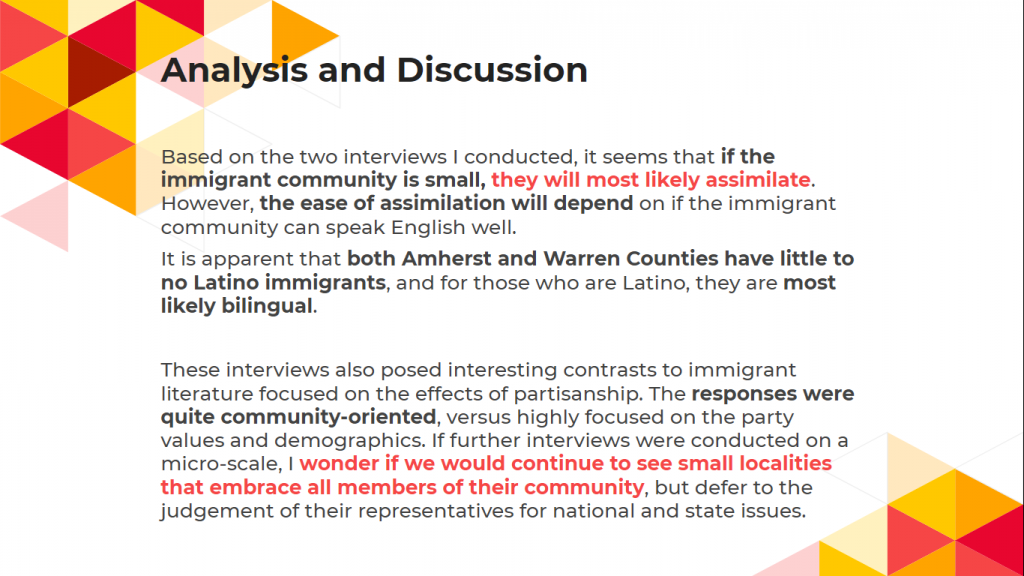
The interviews, primarily Mr. Kurtz’s, show that immigrants will most likely assimilate, given that they are a small minority in a locality. This conclusion is in line with McDermott’s hypothesis. Limitations of this conclusion are that my results derived from communities that are only Republican, small, and highly focused on local politics. On a slight tangent, Stephen Kurtz mentioned that Warren County was a mountainous district, with contempt for the intervention of state and national politics, which is why they were attached to local politics. The United States’ system of federalism certainly allows conditions in which localities can have quite a large degree of autonomy to impact immigrant experience. For communities like Warren and Amherst, although Republican, because their immigrant community is so small, the majority race is most likely to accept new immigrants. This idea prompts me to hope for other rural communities all across America, who even in a time of immigration salience, could be propelling a message of acceptance to all members of the community as well. These results and conclusions drawn also pose a tension with immigration literature that highlights how partisanship is a strong indicator of immigration policy preference (Casellas et al. 2013, Ramakrishnan and Wong 2010). To reconcile these two contrasts, I predict that further research will observe how small localities, which are a significant portion of the U.S., actually do embrace immigrants (when they are in small groups), but are silent in national and state issues. I believe we already have some evidence of this in New Haven and its municipal IDs used to create a community-centered locality (DeGraaw 2014).